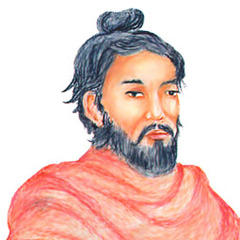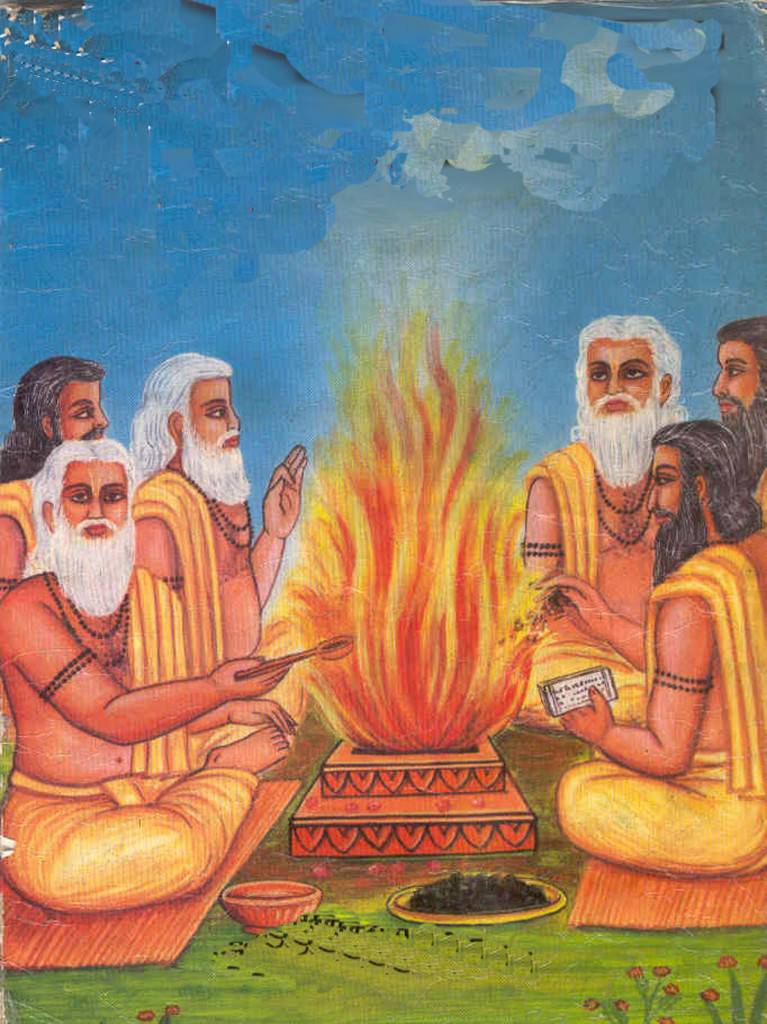- Visitor:15
- Published on:
Language : The Vibration of Consciousness
Bhartṛhari propounds a cosmological thesis. The whole universe (or we should say the linguistic universe), consisting of two different types of things, the vācyas, bits and pieces of the constructed world to which language refers, and the linguistic expressions, the vācaka (signifier), has evolved out of one principle called the Word-Essence, śabda-tattva, the Eternal Verbum, śabda-brahman, the ever-exceeding consciousness of the sentient. We may discount this point as a theological or metaphysical bias, but there may be an important truth implicit in it here. Our perceived world is also an interpreted world. And this interpretation is invariably in terms of some language or other. Interpretation is ‘languageing’. Bhartṛhari believes that both language and the ‘world’ it purports to refer to (and this ‘world’ by his own explicit admission may or may not coincide with the external, actual world) form an indivisible, unitary whole.

I shall present about a dozen verses from Bhartṛhari’s text, Vākyapadīya. His theory of śabda (language) is a very complex one. For him language is an activity – a type of activity in which all human beings, in fact all sentient beings, engage. The Sanskrit name for this activity is śabdanā or śabdana-vyāpāra. It is ‘languageing.’ In Bhartṛhari’s metaphor, it is the very vibration (spanda) of consciousness.
This theory has many facets. (1) Bhartṛhari tells us that language or śabda plays an indispensable part in our cultural life at different levels of consciousness. In fact, it makes the transaction between sentient beings possible. (2) He further asserts that śabda or language is the basis of the distinction between the sentient and the insentient. (3) All thought, all awareness is intertwined with ‘languageing’, for there cannot be any manifestation of awareness unless it is illuminated by śabda (See ch. 12). (4) There are two levels of language or śabda which all linguists must recognize, the implicit or the inner speech and the articulate noise. The former he called sphoṭa, the latter nāda, ‘sound’, ‘noise’. The former is more real; it is the causal basis of the latter. In another formulation, the latter is said to be the ‘transformation’ of the former. (5) Above all, Bhartṛhari propounds a cosmological thesis. The whole universe (or we should say the linguistic universe), consisting of two different types of things, the vācyas, bits and pieces of the constructed world to which language refers, and the linguistic expressions, the vācaka (signifier), has evolved out of one principle called the Word-Essence, śabda-tattva, the Eternal Verbum, śabda-brahman, the ever-exceeding consciousness of the sentient.
We may discount this point as a theological or metaphysical bias, but there may be an important truth implicit in it here. Our perceived world is also an interpreted world. And this interpretation is invariably in terms of some language or other. Interpretation is ‘languageing’. Bhartṛhari believes that both language and the ‘world’ it purports to refer to (and this ‘world’ by his own explicit admission may or may not coincide with the external, actual world) form an indivisible, unitary whole. In the light of such a theory it is easy to see how the vācaka-vācya (signifier-signified) distinction is artificial, provisional and ultimately collapsible into a unity from which it initially arises.
The first verse of the enormous text, Vākyapadīya, runs thus:
The essence of language has no beginning and no end. It is the imperishable Brahman, the ultimate consciousness, which is transformed in the form of meanings and which facilitates the functioning of the world. (Verse I, 1)
An absolute beginning of language is untenable. Language is continuous and co-terminous with the human or any sentient being. A simple argument is formulated in support of this point. The argument is not very different from the early Mīmāṃsaka argument against the conventionalists, the Naiyāyikas, who held that language is an arbitrary and conventional tool, and hence the word-object relationship is created by and learnt through convention for there does not exist any real connection between the word ‘cow’ and the object cow.

According to Bhartṛhari, language is underived and the word-thought relationship is given to us; it is eternal. We cannot say that the word-thought relation was created by some humans or even by God in the long forgotten past, for we do not have any record of such convention. Besides, convention itself presupposes the prior presence of language, which is again sought to be derived from convention. This is patently circular. Invoking God does not help to avoid circularity because even God cannot make His intention known or create convention without using language. We may quote J. Derrida’s epigram: ‘Everything begins by referring back, that is to say, does not begin.’
The verses of Bhartṛhari quoted below make his idea of śabda clear. Some of these verses have been quoted and briefly commented upon in chapter 8. I will repeat them, nevertheless, to underline different aspects of their significance.
Those who study śabda (linguists?) comprehend two types of śabda among the linguistic sounds (upādāna-śabda as opposed to other noises. One is the causal basis for producing sounds and the other designates the object (=meaning). (Verse I, 44)
This may inadvertently be the beginning of the sphoṭa-nāda distinction that is very central to Bhartṛhari’s view of language. There is another verse here which is omitted in the edited text but noted by the commentary. It is more explicit about this distinction:
The śabda that is designative of meaning is an individual unit, a sequence less whole, but it is revealed through the divided items (noisy realities produced in proper sequences). The latter gets intermixed with the object/meaning for it constitutes the very nature of the object/meaning. (Verse I, 44)

Nāda, sometimes called dhvani, stands for the sound, the ‘bang’, the sonority of language, while sphoṭa by way of contrast means literally the language in the form of an ‘explosive’ – the explosive prior to the bang. For Bhartṛhari the latter is the real śabda ‘language’, of which the former is a causal transformation. Basically, the necessity of admitting sphoṭa arises in this way. How are we to explain the understanding of a complete meaning from sounds which are uttered in a temporal sequence (or, letters written in spatial sequence)? Sphoṭa is initially the Sanskrit grammarians’ answer to this question. Between the two levels of language, nāda and sphoṭa, there is the relationship of the manifester and the manifested. Nāda makes sphoṭa manifest while it is also the causal transformation of the latter.
Since nāda arises in sequence, sphoṭa, which has neither a former nor a latter stage, and which is sequenceless, is apprehended (or is born) as if having a sequence as well as parts. (Verse I, 48)
The two levels are, however, not entirely separate, for the essential properties of one are transferred to the other, and thus they are two sides of the same linguistic coin.
Just as the reflected image, although it resides in another place, seems to share the operation (i.e. movements of the waves in water), the sphoṭa and the nāda share the (linguistic) properties in the same way. (Verse I, 49)
Bhartṛhari uses several analogies to explain the nature of language as he conceives it. I shall quote a couple of them here.
The potentiality (kratu?) that is called language is like the yolk of the pea-hen’s egg. It develops (being articulated) into the form of an act where it obtains parts and sequences. (Verse I, 51).
The idea is that the original kratu called language is a unity, without parts and sequences. But when transformed it seems to have parts and sequences, even imperfections (due to pronunciation by human agents).
Just as a figure (the original model) is grasped by the painter’s single awareness, and is painted upon the canvas as another complete, unitary figure, language or linguistic unit (śabda) has likewise all these three stages. (Verse I, 52)
The idea is tentatively this: the original model = the original linguistic unit, a sentential expression along with what it conveys, the image grasped by the painter’s mind = the linguistic reality in the speaker’s mind; the painting = the speaker’s articulation.
Bhartṛhari mentions some of his predecessors’ views regarding the sphoṭa-nāda distinction. His own view seems to have crystallized out of explanation and criticism of these views. I have already discussed these views in chapter 8. Of the views examined, one (Verse 93) says that sphoṭa is the universal or the linguistic type, sentence-type or word-type as opposed to their tokens (sounds), while another (Verse 94) says that the sphoṭa or language is in fact avikārya ‘unmodifiable’ or ‘immutable’ and sounds which have modifications (good or bad, high or low, strong or weak) cause the perception or comprehension of the sphoṭa just as light causes perception of objects. In the course of his critique of these prevalent views, Bhartṛhari announces (verse 121) how language has a pervasive influence on human behavior:
The idea that something is to be done in this world depends upon language. Even the child (when he acts) from the residual traces of his (previous) births, has such understanding as is language-dependent. (Verse, I, 121)
It is also argued in the same context that unless the child has already the language in him he cannot make the effort to reproduce it through his vocal organs. Hence language is not learnt as a novel and external thing but it is an inherent constituent of our awareness, about which we become gradually conscious when the so-called learning procedure starts.
Bhartṛhari seems to assert that there is an inseparable connection between language and awareness. This thesis is expressed as follows:
There is no awareness in this world without its being intertwined with language. All cognitive awareness appears as if it is interpenetrated with language. (Verses I, 123)
If the language-impregnated nature of awareness went away from it, then a cognitive would not manifest (any object), for that (language-impregnated nature) is the distinguishing nature of our cognitive awareness. (Verse I, 124)
The above may imply the rather strong Bhartṛhari thesis:
(B1) All cognitive episodes are equivalent to verbal thoughts.
Or, it may imply the weaker claim:
(B2) Most cognitive episodes with which we deal are invariable verbal thoughts at some implicit level.
There are two sides to this thesis. One is its epistemological implication, which I shall discuss elaborately in the next chapter. The other is a semantic issue: what happens to the semantic relation between word and object.
In terms of such loaded metaphors of ‘illumination’ and ‘consciousness’, one can put the matter as follows; the illuminative power of consciousness is always intertwined with its vāg-rūpatā or śabdanā or ‘languageing’. Taking some help from Kashmir Saivism (Utpala and Abhinava), one can round up this theory of awareness and say that each awareness-episode has two natural powers, the power to reveal or illuminate (prakāśa) and the power to discriminate or differentiate (vimarśa). The second power which is equivalent to ‘languageing’ or differentiation through verbalizability, is never found without the first. This seems to imply that if the pure sensory grasp is one where awareness is not isolatable from what one is aware of, and where what we are aware of is not conceptualizable or verbalizable, then such pure sensation is an impossibility. It is however well-known that some major philosophical traditions, among them the Buddhists and the sense-data theorists, argued that such awareness exists.
Bhartṛhari’s argument is that if the so-called sensory grasp penetrates into the level of awareness it already differentiates the grasped object through ‘languageing’ although at a very implicit level. … The vācya cannot figure in any awareness without the presence of the vācaka already in it.
Source: THE WORD AND THE WORLD – BIMAL KRISHNA MATILAL, OUP
- 7 min read
- 0
- 0










